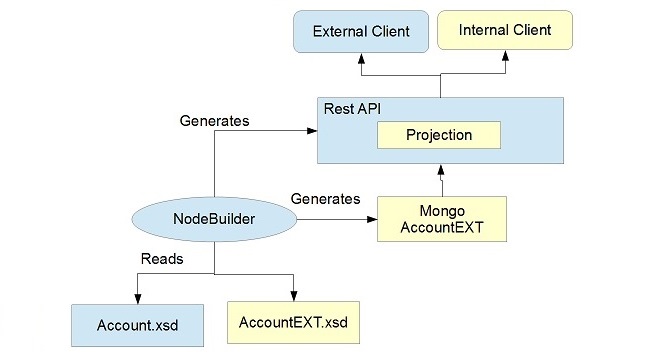
Organizations often have industry-specific interoperability requirements. For instance, the electronics industry has an interoperability specification, RosettaNet, for e-commerce items like an account, order, or invoice.
Companies often extend these standards with custom data, which complicates transformations. Imagine what happens when standards are upgraded to a new version.
The model-driven Node.js make transitions easy.
Scenario: The model uses a standard, Account.xsd. The company extends it with custom attributes (AccountEXT.xsd). The MDN merges these two into the same Mongodb schema (i.e. datastore), and generates a REST api with an embedded projection for AccountEXT data or filters and returns Account data to external clients. A new version of Account requires only a regeneration; likewise any change to AccountEXT.
Part 1: Model Driven Node
Part 2: Multi-Tenant
Part 3: Object Graph Impedance
Part 4: Extending XSD Schema
Part 5: XJC Compiler
Part 6: Scalability
Part 7: Reference Implementation
Part 8: Tags and Queues
Part 9: URL Namespacing
Part 10: JSON Editor and Angular
Source Code

Comments